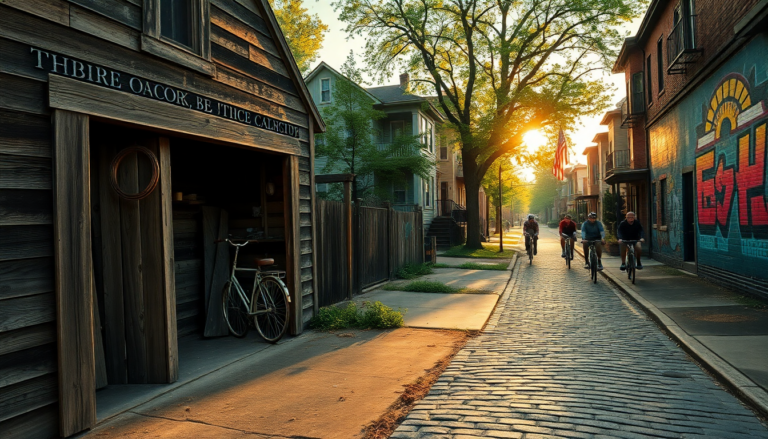Argomenti trattati
Detroit, often seen as a city of contrasts, offers a unique glimpse into both its storied past and the challenges it faces today. The film Gran Torino, directed by and starring Clint Eastwood, serves as a powerful narrative set against the backdrop of this iconic American city. Through the journey of Walt Kowalski, a gruff Korean War veteran, audiences are introduced to the authentic neighborhoods of Detroit, making it a compelling case study for anyone interested in exploring hidden gems in urban landscapes.
The significance of Detroit in Gran Torino
Gran Torino is not merely a film; it is a love letter to Detroit, capturing the essence of a city that has experienced both prosperity and decline. The narrative centers around Walt Kowalski, who embodies the traditional American values that are becoming increasingly rare. As he navigates his changing neighborhood, he encounters Thao, a young neighbor who represents the new demographic landscape of the area. Their evolving relationship showcases the themes of redemption and community, reflecting the broader societal shifts occurring in Detroit.
The film’s locations play a crucial role in telling this story. The streets of Detroit, with their dilapidated buildings and vibrant communities, become characters in their own right, illustrating the contrast between Walt’s past and the present realities of urban life. Each setting in the film serves as a poignant reminder of the city’s rich history and its ongoing transformation.
Key filming locations in Detroit
One of the most iconic locations in Gran Torino is the house where Walt Kowalski lives, located in Highland Park, a neighborhood within the Detroit metropolitan area. This modest home, with its well-maintained garden, reflects Walt’s character and his connection to traditional values. Walking through this neighborhood allows visitors to experience a slice of Americana, where the remnants of a bygone era coexist with the new waves of immigration and cultural shifts.
- **Walt’s house:** The filming location at 238 Rhode Island Street features prominently in the film, particularly in the scene where Walt famously shouts, “Get off my lawn!”
- **Community dynamics:** Many key scenes were shot in the northern neighborhoods of Detroit, highlighting the multicultural fabric of the area, where neighbors come together despite the challenges they face.
- **The barber shop:** The Widgren Barber Shop, located at 204 West 11 Mile Road in Royal Oak, Michigan, serves as a pivotal setting where Walt offers Thao guidance, marking a significant moment in his personal growth.
Exploring the cultural tapestry through the film
The film also showcases the vibrant Hmong community in Detroit, illustrating the importance of cultural exchange. The scene where Walt comes to Sue’s aid against local bullies is a turning point that highlights themes of heroism and community strength. This moment not only serves as a catalyst for Walt’s character development but also emphasizes the shared experiences that bind diverse communities together.
As the film unfolds, viewers witness the juxtaposition of Walt’s tough exterior with his growing connection to his neighbors, particularly the Hmong family. This relationship evolves through shared meals and cultural exchanges, showcasing the power of understanding and acceptance in bridging cultural divides.
Memorable scenes and their significance
One of the most touching sequences occurs during Walt’s funeral at St. Ambrose Church, where the contrasting backgrounds of his family and Thao’s family come to light. The church itself, renowned for its stunning architecture and stained glass windows, serves as a fitting backdrop for this moment of reflection and unity. The eulogy delivered by Father Janovich encapsulates Walt’s impact on the community, highlighting themes of legacy and belonging.
In the final scenes, as Thao drives the iconic Gran Torino with Walt’s dog, Daisy, the serene backdrop of Lake St. Clair represents hope and new beginnings. This imagery, accompanied by the sunset, offers a moment of tranquility and closure, contrasting sharply with the film’s earlier tensions.
Visiting Detroit’s filming locations
For those intrigued by the interplay of film and culture, visiting these filming locations in Detroit provides an opportunity to engage with the narrative of Gran Torino on a deeper level. Each site not only serves as a backdrop for cinematic moments but also embodies the spirit of its community, inviting visitors to reflect on the resilience and transformation of Detroit.
Exploring these areas allows one to appreciate the craftsmanship of storytelling in cinema while also gaining insight into the ongoing journey of a city that continues to evolve and redefine itself. The locations featured in Gran Torino are a testament to Detroit’s rich cultural heritage and the stories that emerge from its streets.

